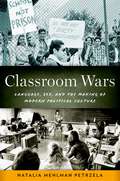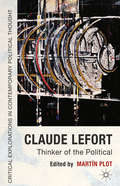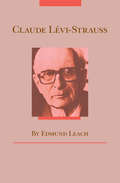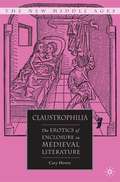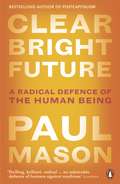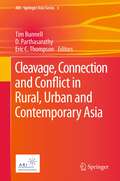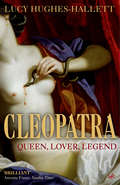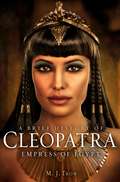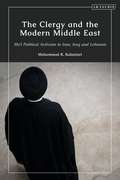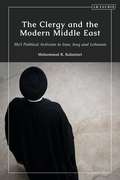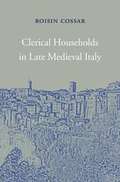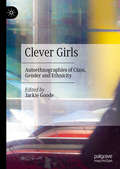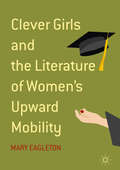- Table View
- List View
Classroom Wars: Language, Sex, and the Making of Modern Political Culture
by Natalia Mehlman PetrzelaThe schoolhouse has long been a crucible in the construction and contestation of the political concept of "family values." Through Spanish-bilingual and sex education, moderates and conservatives in California came to define the family as a politicized and racialized site in the late 1960s and 1970s. Sex education became a vital arena in the culture wars as cultural conservatives imagined the family as imperiled by morally lax progressives and liberals who advocated for these programs attempted to manage the onslaught of sexual explicitness in broader culture. Many moderates, however, doubted the propriety of addressing such sensitive issues outside the home. Bilingual education, meanwhile, was condemned as a symbol of wasteful federal spending on ethically questionable curricula and an intrusion on local prerogative. Spanish-language bilingual-bicultural programs may seem less relevant to the politics of family, but many Latino parents and students attempted to assert their authority, against great resistance, in impassioned demands to incorporate their cultural and linguistic heritage into the classroom. Both types of educational programs, in their successful implementation and in the reaction they inspired, highlight the rightward turn and enduring progressivism in postwar American political culture. In Classroom Wars, Natalia Mehlman Petrzela charts how a state and a citizenry deeply committed to public education as an engine of civic and moral education navigated the massive changes brought about by the 1960s, including the sexual revolution, school desegregation, and a dramatic increase in Latino immigration. She traces the mounting tensions over educational progressivism, cultural and moral decay, and fiscal improvidence, using sources ranging from policy documents to student newspapers, from course evaluations to oral histories. Petrzela reveals how a growing number of Americans fused values about family, personal, and civic morality, which galvanized a powerful politics that engaged many Californians and, ultimately, many Americans. In doing so, they blurred the distinction between public and private and inspired some of the fiercest classroom wars in American history. Taking readers from the cultures of Orange County mega-churches to Berkeley coffeehouses, Natalia Mehlman Petrzela's history of these classroom controversies sheds light on the bitterness of the battles over diversity we continue to wage today and their influence on schools and society nationwide.
Classroom Wars: Language, Sex, and the Making of Modern Political Culture
by Natalia Mehlman PetrzelaThe schoolhouse has long been a crucible in the construction and contestation of the political concept of "family values." Through Spanish-bilingual and sex education, moderates and conservatives in California came to define the family as a politicized and racialized site in the late 1960s and 1970s. Sex education became a vital arena in the culture wars as cultural conservatives imagined the family as imperiled by morally lax progressives and liberals who advocated for these programs attempted to manage the onslaught of sexual explicitness in broader culture. Many moderates, however, doubted the propriety of addressing such sensitive issues outside the home. Bilingual education, meanwhile, was condemned as a symbol of wasteful federal spending on ethically questionable curricula and an intrusion on local prerogative. Spanish-language bilingual-bicultural programs may seem less relevant to the politics of family, but many Latino parents and students attempted to assert their authority, against great resistance, in impassioned demands to incorporate their cultural and linguistic heritage into the classroom. Both types of educational programs, in their successful implementation and in the reaction they inspired, highlight the rightward turn and enduring progressivism in postwar American political culture. In Classroom Wars, Natalia Mehlman Petrzela charts how a state and a citizenry deeply committed to public education as an engine of civic and moral education navigated the massive changes brought about by the 1960s, including the sexual revolution, school desegregation, and a dramatic increase in Latino immigration. She traces the mounting tensions over educational progressivism, cultural and moral decay, and fiscal improvidence, using sources ranging from policy documents to student newspapers, from course evaluations to oral histories. Petrzela reveals how a growing number of Americans fused values about family, personal, and civic morality, which galvanized a powerful politics that engaged many Californians and, ultimately, many Americans. In doing so, they blurred the distinction between public and private and inspired some of the fiercest classroom wars in American history. Taking readers from the cultures of Orange County mega-churches to Berkeley coffeehouses, Natalia Mehlman Petrzela's history of these classroom controversies sheds light on the bitterness of the battles over diversity we continue to wage today and their influence on schools and society nationwide.
Claude Lefort: Thinker of the Political (Critical Explorations in Contemporary Political Thought)
by Mart�n PlotThis is the first English language volume to offer such a wide-ranging scholarly and intellectual perspective on Claude Lefort. It constitutes the most comprehensive attempt to reconstruct Lefort's engagement with his theoretical interlocutors as well as his influence on today's democratic thought and contemporary continental political philosophy.
Claude Levi-Strauss
by Edmund LeachIn this lucide guide to the often abstruse works of Claude Lévi-Strauss, Edmund Leach synthesizes the thought of one of the twentieth century's greatest anthropologists and provides a thoughtful introduction to the theory and practice of structuralism. Leach organizes his work not by chronology but by theme, exploring three important topics in Lévi-Strauss's work: human beings and their symbols, the structure of myth, and kinship theory. Written concisely and with great care and penetration, this brief book is both a fine introduction for the uninitiated reader of Lévi-Strauss and a critical analysis that will prove valuable to those more familiar with the anthropologist's work.
Claustrophilia: The Erotics of Enclosure in Medieval Literature (The New Middle Ages)
by C. HowieThrough extended readings of English, French, and Italian writers of the Thirteenth and Fourteenth centuries, Claustrophilia shows that medieval enclosures actually make room for desires and communities that a poetics of pure openness would exclude.
Clay: A Human History
by Jennifer Lucy Allan'Clay contains infinite possibilities in its transmutations, evidenced on the shelves of our homes, our galleries and museums. Every time we make something with clay, we engage with the timelines that are in the material itself, whether it was dug from a clifftop, riverbed or pit. In firing what we make, we bestow the material with function, meaning, or feeling, and anchor its form in a human present... Objects made from clay contain marks of our existence that collectively tell the story of human history more completely than any other material. There is a reason there are so many pots in museums: because fired clay is one of the most effective keepers of stories we have.'This book is a love letter to clay, the material that is at the beginning, middle and end of all of our lives; that contains within it the eternal, the elemental, and the everyday.People have been taking handfuls of earth and forming them into their own image since human history began. Human forms are found everywhere there was a ceramic tradition, and there is a ceramic tradition everywhere there was human activity. The clay these figures are made from was formed in deep geological time. It is the material that God, cast as the potter, uses to form Adam in Genesis. Tomb paintings in Egypt show the god Khnum at a potter's wheel, throwing a human. Humans first recorded our own history on clay tablets, the shape of the characters influenced by the clay itself. The first love poem was inscribed in a clay tablet, from a Sumerian bride to her king more than 4000 years ago. Born out of a desire to know and understand the mysteries of this material, the spiritual and practical applications of clay in both its micro and macro histories, Clay: A Human History is a book of wonder and insight, a hybrid of archaeology, history and lived experience as an amateur potter.
Clay's Handbook of Environmental Health
by Stephen BattersbySince its first publication in 1933, Clay’s Handbook of Environmental Health (under its different names) has provided a definitive guide for the environmental health practitioner (EHP), and an essential reference for the consultant and student. This 22nd edition continues with its more recent successful structure, reviewing the core principles, techniques, competencies and skills required of an EHP, and then outlining the specialist subjects without getting bogged down in a legalistic approach, seeking to broaden the content for a more global audience. This new edition seeks to educate the EHP on the public health impacts of global heating and the climate emergency and also reflects the COVID-19 pandemic, as might be expected. Although seeking to have global appeal, the impact of the UK leaving the EU is also addressed. The book examines environmental health in different settings, including in the military, working in both conflict and natural disaster settings, and environmental health at sea and airports. In line with previous editions, case studies are used to illustrate how EH problems have been resolved. This new edition includes guidance on key issues in public and environmental health including air pollution, contaminated land, housing and health, noise, water, food safety, pests and vector control, chemicals in the environment and radiation, as well as sustainability and public health and humanitarian crises. This handbook aims to give a basic understanding of the philosophical basis of environmental health, as well as the required technical aspects and an understanding of environmental health in different settings. All chapters have sections on further reading and sources of information. Clay’s Handbook is essential reading for all practitioners, students and researchers in environmental and public health wherever they are working.
Clay's Handbook of Environmental Health
by Stephen BattersbySince its first publication in 1933, Clay’s Handbook of Environmental Health (under its different names) has provided a definitive guide for the environmental health practitioner (EHP), and an essential reference for the consultant and student. This 22nd edition continues with its more recent successful structure, reviewing the core principles, techniques, competencies and skills required of an EHP, and then outlining the specialist subjects without getting bogged down in a legalistic approach, seeking to broaden the content for a more global audience. This new edition seeks to educate the EHP on the public health impacts of global heating and the climate emergency and also reflects the COVID-19 pandemic, as might be expected. Although seeking to have global appeal, the impact of the UK leaving the EU is also addressed. The book examines environmental health in different settings, including in the military, working in both conflict and natural disaster settings, and environmental health at sea and airports. In line with previous editions, case studies are used to illustrate how EH problems have been resolved. This new edition includes guidance on key issues in public and environmental health including air pollution, contaminated land, housing and health, noise, water, food safety, pests and vector control, chemicals in the environment and radiation, as well as sustainability and public health and humanitarian crises. This handbook aims to give a basic understanding of the philosophical basis of environmental health, as well as the required technical aspects and an understanding of environmental health in different settings. All chapters have sections on further reading and sources of information. Clay’s Handbook is essential reading for all practitioners, students and researchers in environmental and public health wherever they are working.
Clean: The New Science of Skin and the Beauty of Doing Less
by James HamblinIntroducing the new science of skin and a more natural approach to being clean: Our skin plays an essential role in our health. But our understanding of what skin is and how it works is changing. Much of what we think of as cleanliness and skincare might actually be harming it. In Clean specialist in preventive medicine Dr James Hamblin draws on the latest science to offer an exciting new perspective: on our bodies, our health and our relationship with the natural world.'You'll never think about your largest organ the same way again' David Epstein, author of Range'A thought-provoking and deeply-researched investigation' Bianca Booker, author of Cork Dork---We treat our skin as a surface to be kept clean and clear, requiring daily application of soap, moisturisers and many other products. But while hygiene - and hand-washing especially - is essential to prevent the spread of disease, this attitude to skincare might actually be damaging our health.In fact, our skin is a complex and diverse ecosystem, playing host to trillions of bacteria that are integral to our immune system. By removing them with soap, we potentially compromise the protection they afford. Not only is our overuse of soap and skincare products harming the environment, it is likely to be exacerbating or even causing many of the skin conditions we seek to remedy or avoid, and increasing our vulnerability to allergies. In Clean, specialist in preventive medicine James Hamblin shows that this is a relatively recent development, and a healthier, simpler way is available. An irreverent and entertaining journey through our complex relationship with our bodies and cleanliness arrives at a new and scientific conception of skincare that is now taking hold: the cultivation of a healthy biome and a natural approach to being clean.
Clean Language Interviewing: Principles and Applications for Researchers and Practitioners
by Heather Cairns-Lee James Lawley Paul ToseyClean Language Interviewing is a landmark publication that defines the field for this important practice; it is essential reading for all researchers who seek to obtain data that are faithful to the experience of the interviewee. Clean language interviewing aims to improve the ability of academic and applied researchers to minimise the introduction of the interviewer’s own assumptions, to avoid ‘leading’ questions and instead to ask ‘clean’ questions. Heather Cairns-Lee, James Lawley and Paul Tosey present a state-of-the-art review of the principles and practice of clean language interviewing to make this rigorous and innovative method accessible. Using real application examples, a global group of contributors analyse the use of clean language interviewing in multiple settings including business, education, and healthcare.
Clean Language Interviewing: Principles and Applications for Researchers and Practitioners
by Heather Cairns-Lee, James Lawley, Paul ToseyClean Language Interviewing is a landmark publication that defines the field for this important practice; it is essential reading for all researchers who seek to obtain data that are faithful to the experience of the interviewee. Clean language interviewing aims to improve the ability of academic and applied researchers to minimise the introduction of the interviewer’s own assumptions, to avoid ‘leading’ questions and instead to ask ‘clean’ questions. Heather Cairns-Lee, James Lawley and Paul Tosey present a state-of-the-art review of the principles and practice of clean language interviewing to make this rigorous and innovative method accessible. Using real application examples, a global group of contributors analyse the use of clean language interviewing in multiple settings including business, education, and healthcare.
Clear Bright Future: A Radical Defence of the Human Being
by Paul MasonA passionate defence of humanity and a work of radical optimism from the international bestselling author of PostcapitalismHow do we preserve what makes us human in an age of uncertainty? Are we now just consumers shaped by market forces? A sequence of DNA? A collection of base instincts? Or will we soon be supplanted by algorithms and A.I. anyway?In Clear Bright Future, Paul Mason calls for a radical, impassioned defence of the human being, our universal rights and freedoms and our power to change the world around us. Ranging from economics to Big Data, from neuroscience to the culture wars, he draws from his on-the-ground reporting from mass protests in Istanbul to riots in Washington, as well as his own childhood in an English mining community, to show how the notion of humanity has become eroded as never before.In this book Paul Mason argues that we are still capable - through language, innovation and co-operation - of shaping our future. He offers a vision of humans as more than puppets, customers or cogs in a machine. This work of radical optimism asks: Do you want to be controlled? Or do you want something better?
CLEAR Dementia Care©: A Model to Assess and Address Unmet Needs
by Dr MF DuffyBehaviour that challenges is often a sign of distress experienced by a person with dementia as they try to cope with the daily stresses of living with their condition. This book shows how to understand challenging behaviour in the context of unmet needs, with effective assessment tools for personalised interventions and enhanced dementia care.
The Clearing: A memoir of art, family and mental health
by Samantha ClarkThis house has been a regular presence in my life for as long as I can remember. My heart has sunk a little every time I walk in . . .Samantha Clark enjoyed a busy career as an artist before returning home to Glasgow to take care of the house that her parents had left behind. Moving from room to room, sifting through the clutter of belongings, reflecting on her mother's long, sedated years of mental illness and her father's retreat to the world of amateur radio and model planes, Samantha began to contemplate her inheritance.A need for creativity and a desire for solitude had sprung up from a childhood shaped by anxiety and confusion. Weaving in the works and lives of others, including celebrated painter Agnes Martin and scientist of dark matter Vera Rubin, The Clearing is a powerful account of what we must do with the things we cannot know.'Samantha Clark writes on the subtle edge of words and thought. She renders the world within and the world of ideas with electric sensitivity and acute intelligence' Jay Griffiths
Cleavage, Connection and Conflict in Rural, Urban and Contemporary Asia (ARI - Springer Asia Series #3)
by Tim Bunnell, D. Parthasarathy and Eric C. ThompsonAsia, the location of the world’s fastest-growing economies, is also home to some of the fastest rates of urbanization humanity has ever seen, a process whose speed renders long-term outcomes highly unpredictable. This volume contrasts with much published work on the rural/urban divide, which has tended to focus on single case studies. It provides empirical perspectives from four Asian countries: India, Indonesia, Malaysia, and Thailand, and includes a wealth of insights that both critique and expand popular notions of the rural-urban divide. The volume is relevant not just to Asian contexts but to social scientific research on population dynamics more generally. Rather than deploying a single study to chart national trends, three chapters on each country make possible much more complex perspectives. As a result, this volume does more than extend our understanding of the interplay between cities and hinterlands within Asia. It enhances our notions of rural/urban cleavages, connections and conflicts more generally, with data and analysis ready for application to other contexts. Of interest to diverse scholars across the social sciences and Asian studies, this work includes accounts ranging from rural youth real estate entrepreneurs in Hyderabad, India, to social development in Aceh province in Indonesia, devastated by the 2004 tsunami, to the relationship between urban space and commonly held notions of the supernatural in Thailand’s northern city of Chiang Mai.
Cleopatra: Queen, Lover, Legend
by Lucy Hughes-Hallett'This is a gripping book... A fascinating account of the way in which succeeding generations have seen Cleopatra; as virtuous suicide, inefficient housewife, exuberant lover, professional courtesan, scheming manipulator, femme fatale, incarnation of Isis and bimbo' - Economist
Cleopatra: A Biography (Women in Antiquity)
by Duane W. RollerFew personalities from classical antiquity are more famous--yet more poorly understood--than Cleopatra VII, queen of Egypt. In this major biography, Duane Roller reveals that Cleopatra was in fact a learned and visionary leader whose overarching goal was always the preservation of her dynasty and kingdom. Roller's authoritative account is the first to be based solely on primary materials from the Greco-Roman period: literary sources, Egyptian documents (Cleopatra's own writings), and representations in art and coinage produced while she was alive. His compelling portrait of the queen illuminates her prowess as a royal administrator who managed a large and diverse kingdom extending from Asia Minor to the interior of Egypt, as a naval commander who led her own fleet in battle, and as a scholar and supporter of the arts. Even her love affairs with Julius Caesar and Marcus Antonius--the source of her reputation as a supreme seductress who drove men to their doom--were carefully crafted state policies: she chose these partners to insure the procreation of successors who would be worthy of her distinguished dynasty. That Cleopatra ultimately lost to her Roman opponents, Roller contends, in no way diminishes her abilities. "Roller tells his tale smoothly and accessibly....The resulting portrait is that of a complex, many-sided figure, a potent Hellenistic ruler who could move the tillers of power as skillfully as any man, and one far and nobly removed from the 'constructed icon' of popular imagination." --The New York Times Book Review "A rich account of late Ptolemaic culture." --The New Yorker "Offers a superb panorama of the society and culture of late Ptolemaic Egypt, with vivid sketches of the (remarkably vigorous) intellectual life of Cleopatra's Alexandria and the structural instabilities of the late Ptolemaic state." --Times Literary Supplement "Besides providing a compelling story and breathing fresh air into a heretofore two-dimensional caricature from history, Roller's 'Cleopatra' provides an interesting commentary on the attitudes still prevalent towards women who rule." --Christian Science Monitor "Compulsively readable." --Bookslut "A definitive account of a queen of remarkable strength." --Publishers Weekly
Cleopatra: Last Pharaoh of Egypt (Brief Histories)
by M. TrowWhen Cleopatra took the throne of the kingdom of Egypt, the pyramids and Sphinx were already ancient wonders. As queen she faced conquest by a new, all-powerful empire. A Ptolemy, descended from a general of Alexander the Great who conquered the Nile as part of his Macedonian lands, her relationship with Mark Anthony has become one of the legendary love stories in history. Trow draws on recent archaeological finds and fresh interpretations of ancient texts to separate truth from myth and set this incomparably beautiful queen in context.
Cleopatra and the Undoing of Hollywood: How One Film Almost Sunk the Studios
by Patrick HumphriesCleopatra has its place as one of the most fabled films of all time. While others have won more Oscars, attracted better reviews and taken more money at the box office, the 1963 film starring Elizabeth Taylor and Richard Burton stands alone in cinema legend. What began in 1958 as a $2 million vehicle for Joan Collins eventually opened five years later, having cost more than twenty times that amount. The making of the film soon became a cautionary tale, for the lavish extravagance of Cleopatra all but bankrupted 20th Century Fox and almost singlehandedly set in motion the decline of the major studios. Actors and filmmakers were hired and fired at a breathtaking rate, and by the time the film was finally released, Hollywood could only watch in horror as it died at the box office. This is an epic tale of love and lust; of gossip, money, sex, movie-star madness, studio politics and the birth of paparazzi journalism. Within the saga of Cleopatra lies the end of the era of Hollywood’s studio system, the seeds of the Swinging Sixties, and the stuff of timeless movie legend.
The Clergy and the Modern Middle East: Shi'i Political Activism in Iran, Iraq and Lebanon
by Mohammad R. KalantariThe Shi'i clergy are amongst the most influential political players in the Middle East. For decades, scholars and observers have tried to understand the balance of power between, Shi'i 'quietism' and 'activism'.The book is based on exclusive interviews with high-profile Shi'i clerics in order to reveal how the Shi'i clerical elite perceives its role and engages in politics today. The book focuses on three ground-breaking events in the modern Middle East: the 1979 Islamic Revolution in Iran, the 2003 Iraq War, and the 2006 July war in Lebanon. By examining the nature and evolution of a Shi'i clerical network the book finds that, far from there being strategic differences between 'quitest' and 'activist' clerics, Shi'i mujtahid statesmen matured, from 1979 in Iran to 2003 Iraq, by way of a pragmatism which led to a strong form of transnational and associated whole in Lebanon in 2006. In doing so, the book breaks down the established, and misleading, dichotomisation of the Shi'i clergy into 'quietists' and 'activists' and discovers that the decision of Shi'i clerical elites to become politically active or to stay out of politics are attributable to their ability to adapt to their political environments.
The Clergy and the Modern Middle East: Shi'i Political Activism in Iran, Iraq and Lebanon
by Mohammad R. KalantariThe Shi'i clergy are amongst the most influential political players in the Middle East. For decades, scholars and observers have tried to understand the balance of power between, Shi'i 'quietism' and 'activism'.The book is based on exclusive interviews with high-profile Shi'i clerics in order to reveal how the Shi'i clerical elite perceives its role and engages in politics today. The book focuses on three ground-breaking events in the modern Middle East: the 1979 Islamic Revolution in Iran, the 2003 Iraq War, and the 2006 July war in Lebanon. By examining the nature and evolution of a Shi'i clerical network the book finds that, far from there being strategic differences between 'quitest' and 'activist' clerics, Shi'i mujtahid statesmen matured, from 1979 in Iran to 2003 Iraq, by way of a pragmatism which led to a strong form of transnational and associated whole in Lebanon in 2006. In doing so, the book breaks down the established, and misleading, dichotomisation of the Shi'i clergy into 'quietists' and 'activists' and discovers that the decision of Shi'i clerical elites to become politically active or to stay out of politics are attributable to their ability to adapt to their political environments.
Clerical Households in Late Medieval Italy (I Tatti studies in Italian Renaissance history #20)
by Roisin CossarRoisin Cossar examines how clerics managed efforts to reform their domestic lives in the decades after the Black Death. Despite reformers’ desire for clerics to remain celibate, clerical households resembled those of the laity, and priests’ lives included apprenticeships in youth, fatherhood in middle age, and reliance on their families in old age.
Clerical Households in Late Medieval Italy (I Tatti studies in Italian Renaissance history #20)
by Roisin CossarRoisin Cossar examines how clerics managed efforts to reform their domestic lives in the decades after the Black Death. Despite reformers’ desire for clerics to remain celibate, clerical households resembled those of the laity, and priests’ lives included apprenticeships in youth, fatherhood in middle age, and reliance on their families in old age.
Clever Girls: Autoethnographies of Class, Gender and Ethnicity
by Jackie GoodeThis collection by three generations of women from predominantly working-class backgrounds explores the production of the classed, gendered and racialized subject with powerful, engaging, funny and moving stories of transitions through family relationships, education, friendships and work. The developments that take place across a life in processes of ‘becoming’ are examined through the fifteen autoethnographies that form the core of the book, set within an elaboration of the social, educational and geo-political developments that constitute the backdrop to contributors’ lives. Clever Girls discusses the status of personal experience as ‘research data’ and the memory work that goes into the making of autoethnography-as-poiesis. The collection illustrates the huge potential of autoethnography as research method, mode of inquiry and creative practice to illuminate the specificities and commonalities of experiences of growing up as ‘clever girls’ and to sound a ‘call to action’ against inequality and discrimination.
Clever Girls and the Literature of Women's Upward Mobility
by Mary EagletonThis book follows the figure of ‘the clever girl’ from the post-war to the present and focuses on the fiction, plays and memoirs of contemporary British women writers. Spurred on by an ethic of meritocracy, the clever girl is now facing austerity and declining social mobility. Though suggesting optimism, a public discourse of ‘opportunity’, ‘aspiration’ and ‘choice’ is often experienced as an anxious and chancy process. In a wide-ranging study, the book explores the struggle to move away from home and traditional notions of femininity; the persistent problems associated with women’s embodiment; the pressures of class and racial divisions; the new subjectivities of the neoliberal era; and the generational conflict underpinning austerity. The book ends with a consideration of feminism’s place as a phantom presence in this history of clever girls. This study will appeal to readers of contemporary women’s writing and to those interested in what has been one of the dominant social narratives of the post-war period from upward to declining mobility.
